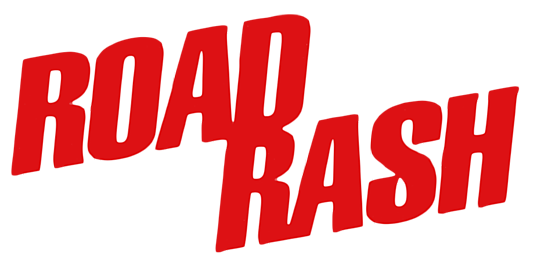SEPTEMBER 4, 2022 – (Cont.) When my mother got older she became obsessed (apparently) about her kids being rash. “Don’t do anything rash,” was a regular part of her farewell after every visit at “the home.” I won’t speak for my generally well-behaved sisters, but I’ll readily acknowledge that at an earlier stage of life, Mother had very reason to worry about my being “rash” and then some—to which she was oblivious, particularly while I was a million miles away at school.
Today I thought about my mother’s routine admonition. A skin condition having manifested on Friday turned into a raging, near full-body rash by this afternoon. It looks absolutely horrible, though—fingers crossed—the rash generates only heat, not pain or itching. Steroidal creams have been applied—one to face and scalp, one to torso, back, arms and legs.
Dr. Betts and others say is most likely a combination of drug reactions (possibly penicillin, to which my three sisters are allergic; our paternal grandfather having passed the trait down, apparently) and a virus that all of us harbor, the name of which virus escapes me. The penicillin has been substituted; the increase in white blood cells will eventually beat back the virus, if that’s the cause of a ridiculously red face and scalp. The medicine bag holds other remedies, as well, apparently.
There’s a potential plus side to the rash, however, if I were a mischievous misanthrope: if I wanted to shut down social media worldwide and create utter chaos for civilization, all I’d have to do is post a close-up of my (now shaven) head and upper torso. It’d “go viral,” as it were, in less than 10 seconds, and President Biden’s approval ratings would take a big hit.
Mother gets the last laugh. Somehow I’d failed “to obey” her admonishment: not only am I “rash” (adjective); I am one big . . . rash.
On the improvement side, an early a.m. lab revealed that my neutrophil count had doubled from 0.1 to 0.2. And as Dr. Betts said yesterday and today, the progress in white blood cells (which carry with them, neutrophils) is not linear. I told him and the nurses on hand that I had special elves painting up signs on a white background and blue lettering, “GO FOR 0.4!” for display at the imaginary celebration I’m planning after tomorrow morning’s lab results come in. Without missing a beat, Dr. Betts said, “How about erasable markers on a white board, because the count could be a lot higher.”
The neutrophil response is the key for emerging from the “crappy zone” from which I was rescued Friday. But “crappy” attributes have persisted into today. Dr. Kolla was right when he said, “I don’t want to sugar-coat it.”
This isn’t easy. It just isn’t, but I’ve forced myself to adjust, to accept this temporary period of roughness. As my caregivers draw blood, from these extraordinary people I draw hope, encouragement, and inspiration. Every single encounter is a chance to add to the reservoir.
Everyone has compelling stories. Everyone—and by tapping into these stories, I connect with the story-teller, always to discover more stories and deeper connections.
After I’d published yesterday’s post, I read to Nurse Kristie the excerpt about her. If you’ll recall, to describe the seamless hand-off between Kaylen and Kristie, I’d used the analogy of a relay runner’s perfectly timed passing of the baton.
“Oh my God!” said Kristie. “I was a relay runner in high school and college track!”
This opened a double-door into a beautiful discussion of her running career—which includes several marathons, to which she’ll soon add the 2022 running of the Twin Cities Marathon. Her mother had been an elite high school and college runner and in 1980 had advanced to the Olympic Trials in the 10km. In addition, her uncles were serious collegiate runners, and one still holds a DIV III record in the steeplechase.
Our common experience with competitive running has helped much in my recovery. Kristie “gets” what I’m striving to draw from my experience of running marathons.
Last night, I had to switch out analogies. I went for skiing. The mission was simply to get myself out of bed and to the bathroom. I needed even more motivation than bowel and bladder pressure could provide. I put my head down. As Kaylen encouraged me, I began aloud, “Okay, Eric, just keep moving—KEEP MOVING—up the hill. Do NOT look at the top of the hill; just focus on striding to the right, then striding to the left, using your poles, and COUNT. The higher you reach in the count, the closer you’ll be to the crest. And once you’ve reached the crest, Eric, you can catch your breath and your bearings on the downhill run on the other side. It’ll be fine, but you HAVE TO MAINTAIN your momentum.”
Today I walked a mile—plus an extra lap for 12, reflective of transplant Day 12. Tomorrow my goal is 13—and so on. To compensate, I took lots of naps.
I’m not out of the woods. The undulating ski trail snakes past old growth white pine, my favorite, and after a series of uphill climbs, the course will eventually give the weary skier some relieve. And after all, every stride, takes me closer to the next kilometer post, and each post marks definable progress.
Again, none of this is easy, but as my good friend Sally says about learning new, challenging music, everything worth doing is hard before it’s easy.
When I get to the easy part, I’ll enjoy and respect life and all its beauty as never before. And I’ll carry you along.
Meanwhile, head down. (Cont.)
(Remember to subscribe to this blog and receive notifications of new posts by email.)
© 2022 by Eric Nilsson
